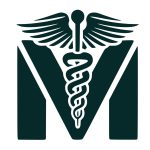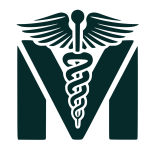Treatment
Lung Cancer
What is Lung Cancer?
Lung cancer is the uncontrolled growth of abnormal cells in one or both lungs, primarily affecting the airways (bronchi or bronchioles) or air sacs (alveoli). It is the leading cause of cancer death worldwide for both men and women.
- Types:
- Non-Small Cell Lung Cancer (NSCLC): Most common (about 85% of cases). Includes subtypes:
- Adenocarcinoma (most common in non-smokers and women)
- Squamous Cell Carcinoma (often linked to smoking)
- Large Cell Carcinoma
- Small Cell Lung Cancer (SCLC): Less common (about 10-15%), more aggressive, spreads quickly, almost always linked to smoking.
- Non-Small Cell Lung Cancer (NSCLC): Most common (about 85% of cases). Includes subtypes:
- Symptoms (Often appear in later stages):
- Persistent or worsening cough (sometimes with blood)
- Chest pain (worse with deep breathing, coughing, laughing)
- Shortness of breath or wheezing
- Hoarseness
- Unexplained weight loss and loss of appetite
- Fatigue and weakness
- Recurrent lung infections (bronchitis, pneumonia)
- Bone pain or headaches (if spread)
- Major Risk Factors:
- Smoking: The #1 cause. Responsible for about 80-90% of cases. Includes cigarettes, cigars, and pipes. Secondhand smoke is also a risk.
- Radon Gas: A naturally occurring radioactive gas from soil/rock, the #2 cause. It can seep into homes.
- Occupational Exposures: Asbestos, arsenic, chromium, nickel, diesel exhaust, soot.
- Air Pollution: Long-term exposure to polluted air.
- Family History: Genetic predisposition plays a role.
- Previous Lung Disease: COPD, pulmonary fibrosis.
- Other: Exposure to radiation (e.g., chest radiation therapy), arsenic in drinking water.
- Diagnosis:
- Imaging: Chest X-ray, CT scan (more detailed), PET scan (to look for spread).
- Biopsy: Essential for confirmation. Methods include:
- Bronchoscopy (tube down throat into airways)
- Needle biopsy (through chest wall)
- Surgical biopsy (VATS or open)
- Analysis of sputum or fluid around the lung (pleural effusion).
- Molecular Testing: On biopsy tissue to look for specific genetic mutations (e.g., EGFR, ALK, ROS1, BRAF, KRAS) or PD-L1 protein expression. Crucial for guiding targeted therapy or immunotherapy.
- Staging (Determines extent of spread – TNM System):
- Stage 0: Abnormal cells only in the top lung lining.
- Stage I: Small tumor confined to the lung.
- Stage II: Larger tumor or spread to nearby lymph nodes.
- Stage III: Spread to lymph nodes in the center of the chest or locally advanced structures.
- Stage IV: Spread (metastasized) to other organs (brain, bones, liver, opposite lung).
- Treatment (Depends heavily on type, stage, molecular features, & patient health):
- Surgery: Removal of tumor and surrounding tissue (lobectomy, pneumonectomy, wedge resection). Primarily for early-stage NSCLC.
- Radiation Therapy: Uses high-energy beams to kill cancer cells. Used for localized tumors, to shrink tumors before surgery, after surgery, to relieve symptoms, or to treat metastases (e.g., brain).
- Chemotherapy: Drugs that kill cancer cells throughout the body. Common for SCLC and advanced NSCLC (often combined with immunotherapy). Also used before/after surgery (neoadjuvant/adjuvant).
- Targeted Therapy: Drugs targeting specific genetic mutations driving the cancer (e.g., EGFR inhibitors, ALK inhibitors). Used for advanced NSCLC with specific mutations.
- Immunotherapy: Drugs that help the body’s immune system recognize and attack cancer cells (e.g., PD-1/PD-L1 inhibitors, CTLA-4 inhibitors). Used for many stages of NSCLC and sometimes SCLC.
- Combination Therapies: Often used (e.g., chemo + immunotherapy, targeted therapy + chemo).
- Palliative Care: Focuses on relieving symptoms and improving quality of life at any stage, alongside other treatments.
- Prevention:
- Don’t Smoke / Quit Smoking: The most effective way to prevent lung cancer.
- Avoid Secondhand Smoke.
- Test Your Home for Radon.
- Limit Occupational Exposures: Use protective equipment.
- Healthy Diet: Rich in fruits and vegetables (evidence is mixed but generally healthy).
- Screening (For High-Risk Individuals): Annual low-dose CT (LDCT) scans for people aged 50-80 with a significant smoking history (e.g., 20 pack-years) who currently smoke or quit within the past 15 years. Can detect cancer earlier when more treatable.
- Prognosis:
- Varies greatly depending on type, stage at diagnosis, molecular features, and overall health.
- Early-stage (I/II) NSCLC: Often curable with surgery.
- Locally Advanced (Stage III): Treatment aims for cure or long-term control, often challenging.
- Metastatic (Stage IV): Generally, not curable, but treatments (targeted therapy, immunotherapy, chemo) can often control the disease for significant periods and improve survival and quality of life. Survival rates have improved considerably in recent years due to new therapies.
- SCLC: Often aggressive. Limited stage has a better prognosis than extensive stage, but recurrence is common.


